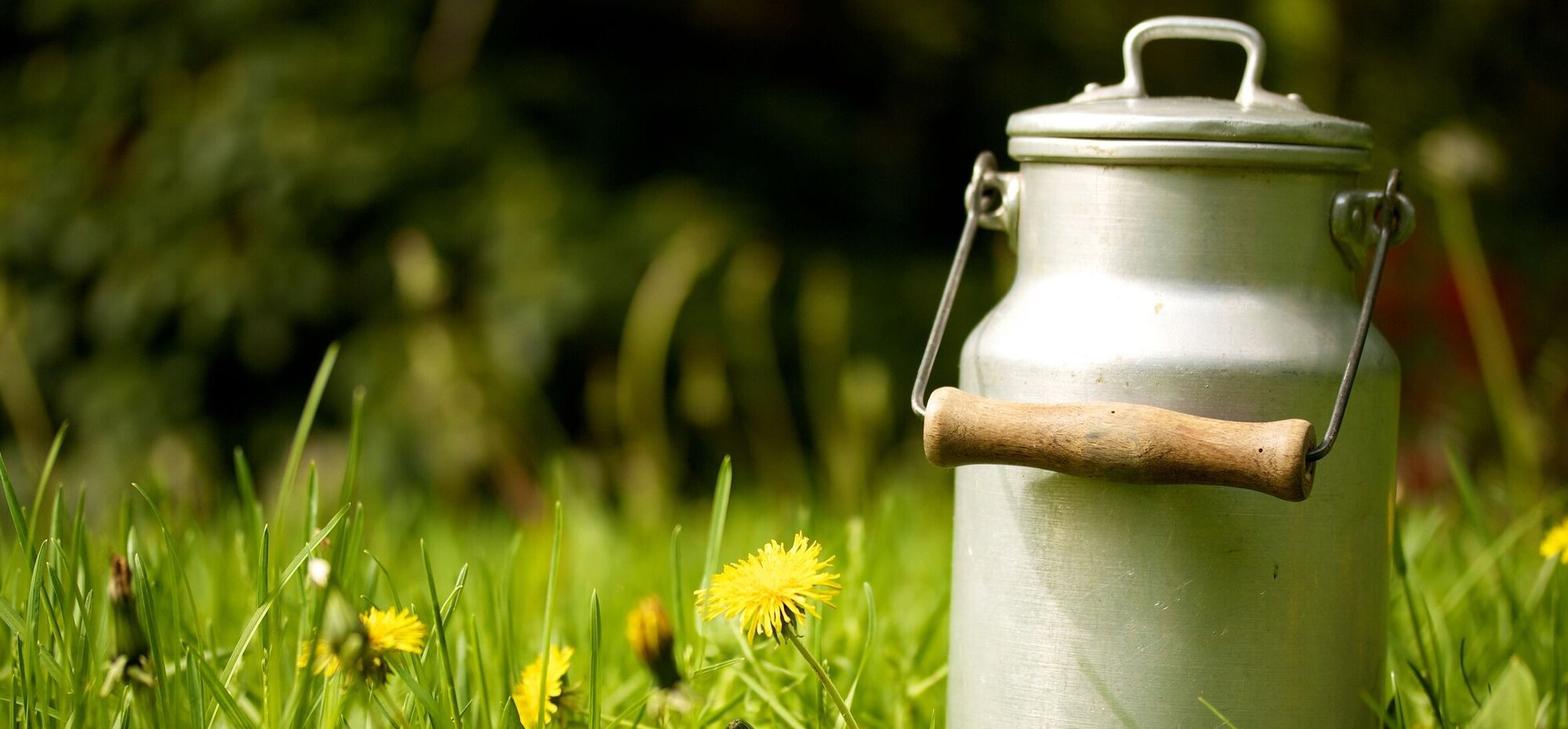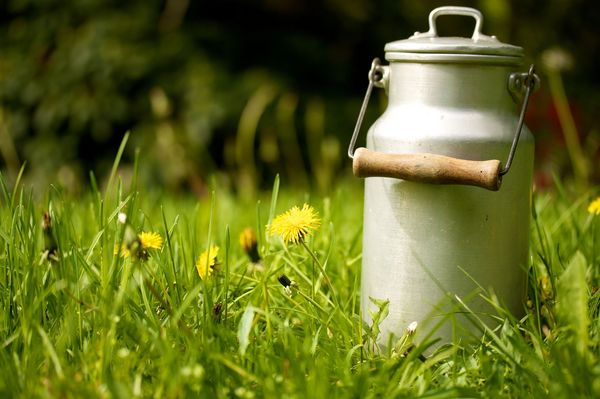FAQ
Things to know about milk from cow-calf contact systems
Kerstin Barth | 31.05.2022
Is milk from cow-calf contact systems safe? Which farms offer it at all? And how much milk does a calf actually suckle? Here you will find answers to these and other questions.

Now and then it is reported that udder diseases can be cured by sucking calves. Scientific studies for this are only available to a limited extent. It is undisputed that the repeated removal of germ-rich or toxin-enriched milk from the udder can have a positive effect on the healing process. However, this also means that the calves have to take over the work of the milker and - far more alarmingly - drink the pathologically altered milk. This is not in the interest of valuable offspring!

The EU Hygiene Regulation for food of animal origin (Regulation (EC) 853/2004) defines raw milk as "the unaltered milk of farmed animals that has not been heated above 40°C and has not undergone any treatment having a similar effect." However, the term "unaltered" is not explained in more detail and probably refers to the deliberate removal or addition of substances.
The German regulation on the further development of raw milk commodity law (dated January 11, 2021) defines raw milk in §3 as "the untreated product of the normal udder secretion of cattle obtained exclusively by one or more milkings, whereby the cooling of raw milk is not considered treatment." There are no specifications as to the minimum amount of milk a cow must give per milking. In principle, milk obtained for human consumption, including milk from cow-calf contact systems, must meet established quality criteria and be tested in accordance with regulations. However, private-law contracts with dairies may prevent the implementation of cow-calf contact.
How much milk a calf takes in by suckling can only be determined indirectly by the weigh-suckle-weigh method. Sylvia Nicht (2005) determined milk quantities of between 2.5 and 5 liters per suckling bout after a defined intermediate suckling period of three to five hours, depending on the age of the calf. If there is unhindered contact with the dam, there is no question that the calves have an adequate supply: daily weight gains of more than 1000 grams are normal (Roth et al. (2009)). In the combination of mothers and foster cows, several calves suckle on one cow that in addition has usually been milked beforehand. Consequently, only limited milk is available to the calves. The extent to which this affects their physical development has not yet been studied.
That depends, of course, on the applied systems. In our studies, where each cow suckles only her own calf for more than 90 days and this also had access to its dam the whole day, the difference between the control cows (without calf contact) and the cows that nurse their calves averaged about 15 kg of milk per cow per day. The 305-day yield showed a reduction of about 1,600 kg for the cows with calf contact. This amount is not lost, of course, but essentially benefits the calf.
The number of farms that raise their calves on the mother or a wet nurse is still manageable. In most cases, the milk produced in this way is only sold directly to customers. The animal welfare organisation ProVieh e. V. has published a list of farms on its website that produce milk in this way and in some cases also market it directly.






